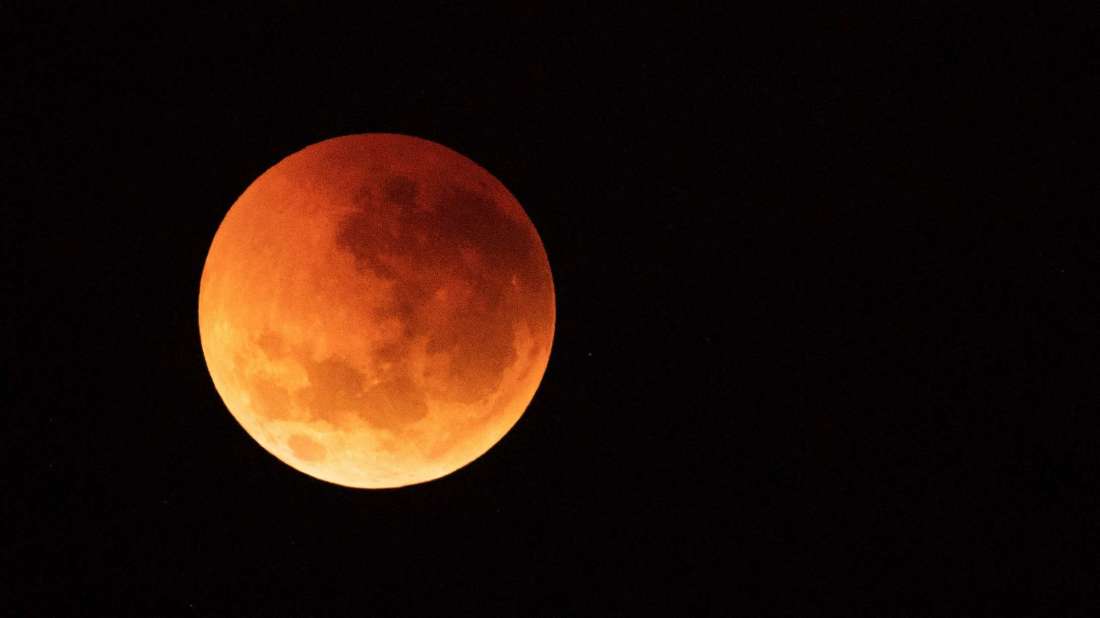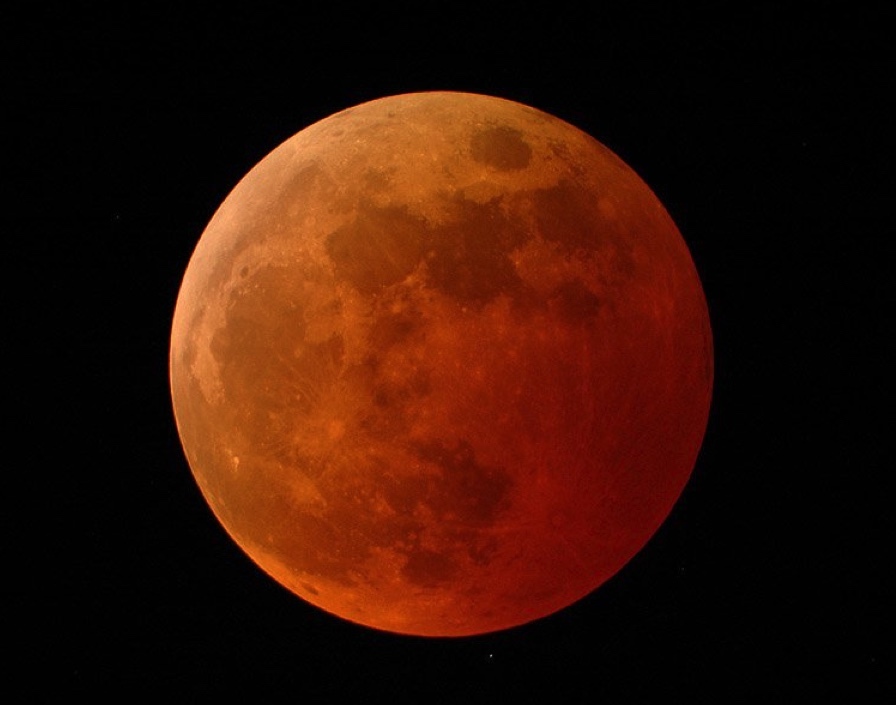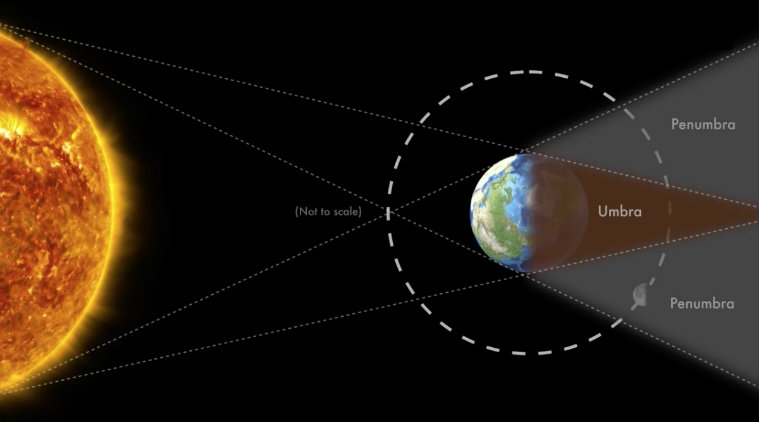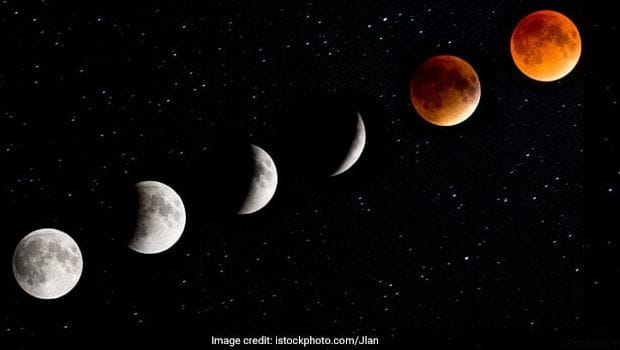Few parts of the world are going to witness the rare cosmic event called Super Blood Wolf Moon Lunar Eclipse which is a result of three lunar phenomena happening together. And is the last ‘blood moon’ eclipse of the decade.
Let’s see why it is been called as “Super Blood Wolf Moon Lunar Eclipse” first.
Total Lunar Eclipse:
A total lunar eclipse takes place when the Earth comes between the Sun and the Moon and covers the Moon with its shadow.
Super Moon:
This is called as a ‘Super moon’ because during this the Moon is at its closest distance to the Earth in the orbit and this point is known as the “perigee”.
In a super moon, our planet’s satellite appears 14 per cent larger and almost 30 per cent brighter in the sky.
Blood Moon:
The reason this is called a Blood Moon is because during a total lunar eclipse, the moon appears to take a reddish colour, hence the name Blood Moon.
What makes the moon turn red?
So why does the Moon appear red? During the lunar eclipse, the Moon is blocked from the sunlight since the Earth is in the way. Instead of reflecting sunlight as the Moon would have done at any other point, the Earth casts a shadow on the satellite
However not all sunlight is blocked, and because the Earth’s atmosphere allows the red wavelength light to pass through, the Moon reflects those and appears to have a reddish colour. This is because red light has a longer wavelength and can travel a longer distance, rather than blue light, which the Earth’s atmosphere filters out.
Wolf Moon:
Finally, this is called a Wolf moon is a part of tradition of referring to January’s full moon. There’s no actually wolf connection to the moon here.

Visibility of this eclipse:
According to NASA, if the skies are clear the eclipse will be visible across North America, South America, Greenland, Iceland, Ireland, Britain, Norway, Sweden, Portugal, France and Spain. The rest of Europe and Africa will also get a glimpse of the Super Blood Wolf Moon.
7 Stages of the Eclipse:
A total lunar eclipse usually happens within a few hours. Totality can range anywhere from a few seconds to about 100 minutes. The July 26, 1953 total lunar eclipse had one of the longest periods of totality in the 20th century—100 minutes and 43 seconds.
There are 7 stages of a total lunar eclipse:
- Penumbral eclipse begins: This begins when the penumbral part of Earth’s shadow starts moving over the Moon. This phase is not easily seen by the naked eye.
- Partial eclipse begins: Earth’s umbra starts covering the Moon, making the eclipse more visible.
- Total eclipse begins: Earth’s umbra completely covers the Moon and the Moon is red, brown, or yellow in color.
- Maximum eclipse: This is the middle of the total eclipse.
- Total eclipse ends: At this stage, Earth’s umbra starts moving away from the Moon’s surface.
- Partial eclipse ends: Earth’s umbra completely leaves the Moon’s surface.
- Penumbral eclipse ends: At this point, the eclipse ends and Earth’s shadow completely moves away from the Moon.
When the Eclipse Happens Worldwide — Timeline
Lunar eclipses can be visible from everywhere on the night side of the Earth, if the sky is clear. From some places, the entire eclipse will be visible, while in other areas the Moon will rise or set during the eclipse.
| Event | UTC Time |
| Penumbral Eclipse begins | 21 Jan, 02:36:29 |
| Partial Eclipse begins | 21 Jan, 03:33:54 |
| Full Eclipse begins | 21 Jan, 04:41:17 |
| Maximum Eclipse | 21 Jan, 05:12:14 |
| Full Eclipse ends | 21 Jan, 05:43:15 |
| Partial Eclipse ends | 21 Jan, 06:50:39 |
| Penumbral Eclipse ends | 21 Jan, 07:48:02 |
How long will the total lunar eclipse last?
The total lunar eclipse, which is also being called as a Super Blood Wolf Moon, will last around one hour and two minutes. This is peak eclipse or the greatest eclipse period, which is when Moon comes closest to the axis of Earth’s shadow
The entire eclipse will start at 7:34 pm PST / 11:41 pm EST and last till 10.50 pm PST and this includes partial and total eclipse. The peak eclipse will start at 8.41 pm PST and end at 9.43 pm PST. For India, this comes to 10.11 AM on the morning of January 21 and ending at 11.13 am IST on January 21, however, the eclipse will not be visible to people in India and other Asian countries. The entire event, which includes total as well as partial lunar eclipse will reportedly last for three and a half hours.
Appearance of Super Blood Wolf Moon
In the first phase, no real difference will appear in the moon. In the second phase, a partial eclipse will appear. About 90 minutes later, it will reach totality. The moon will give a reddish glow. The process then goes in reverse.
How to see Super Blood Wolf Moon
There’s no need of any special equipment to watch Super Blood Wolf Moon. If the weather is clear, stargazers will be able to enjoy this celestial show.


